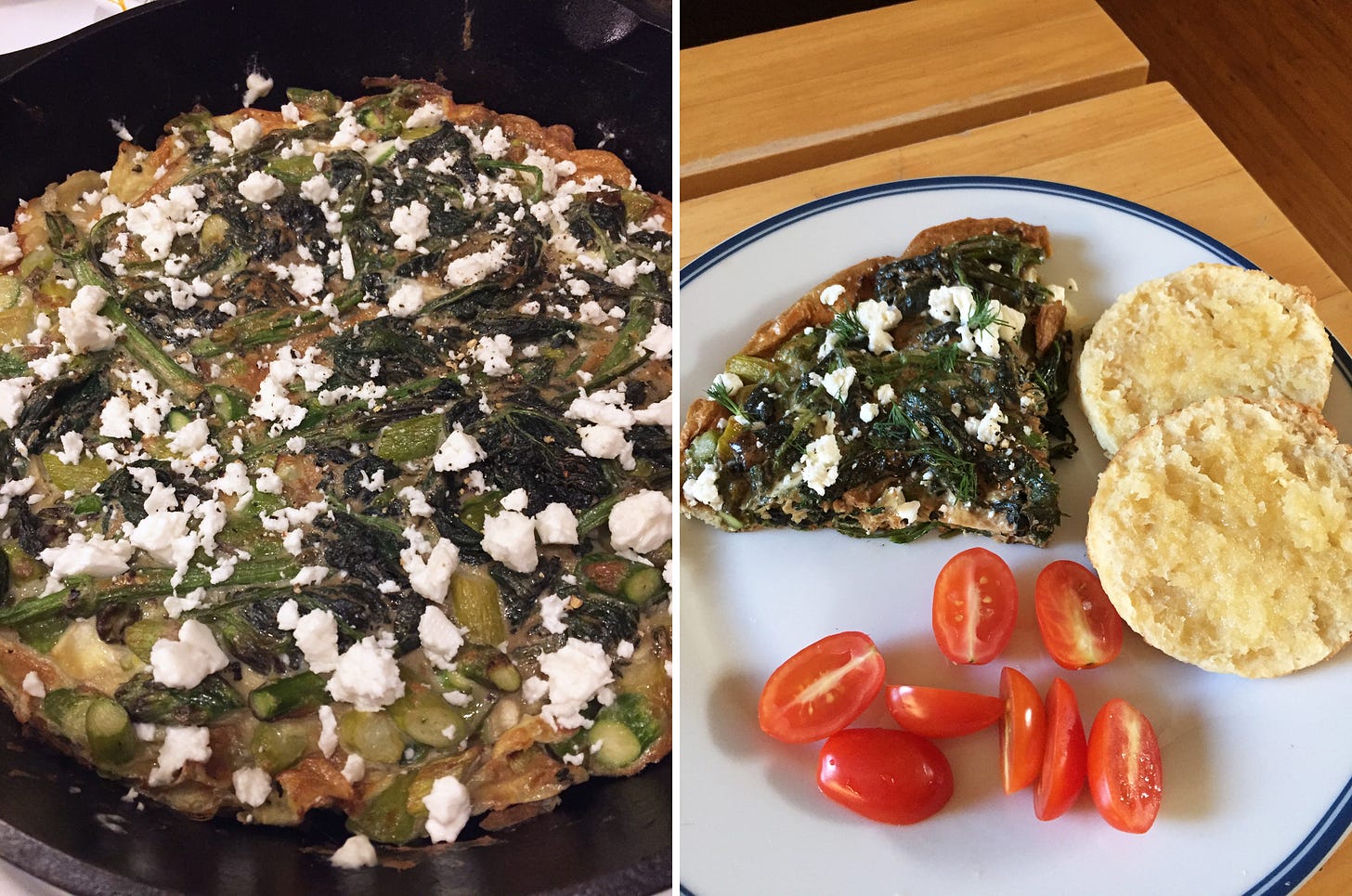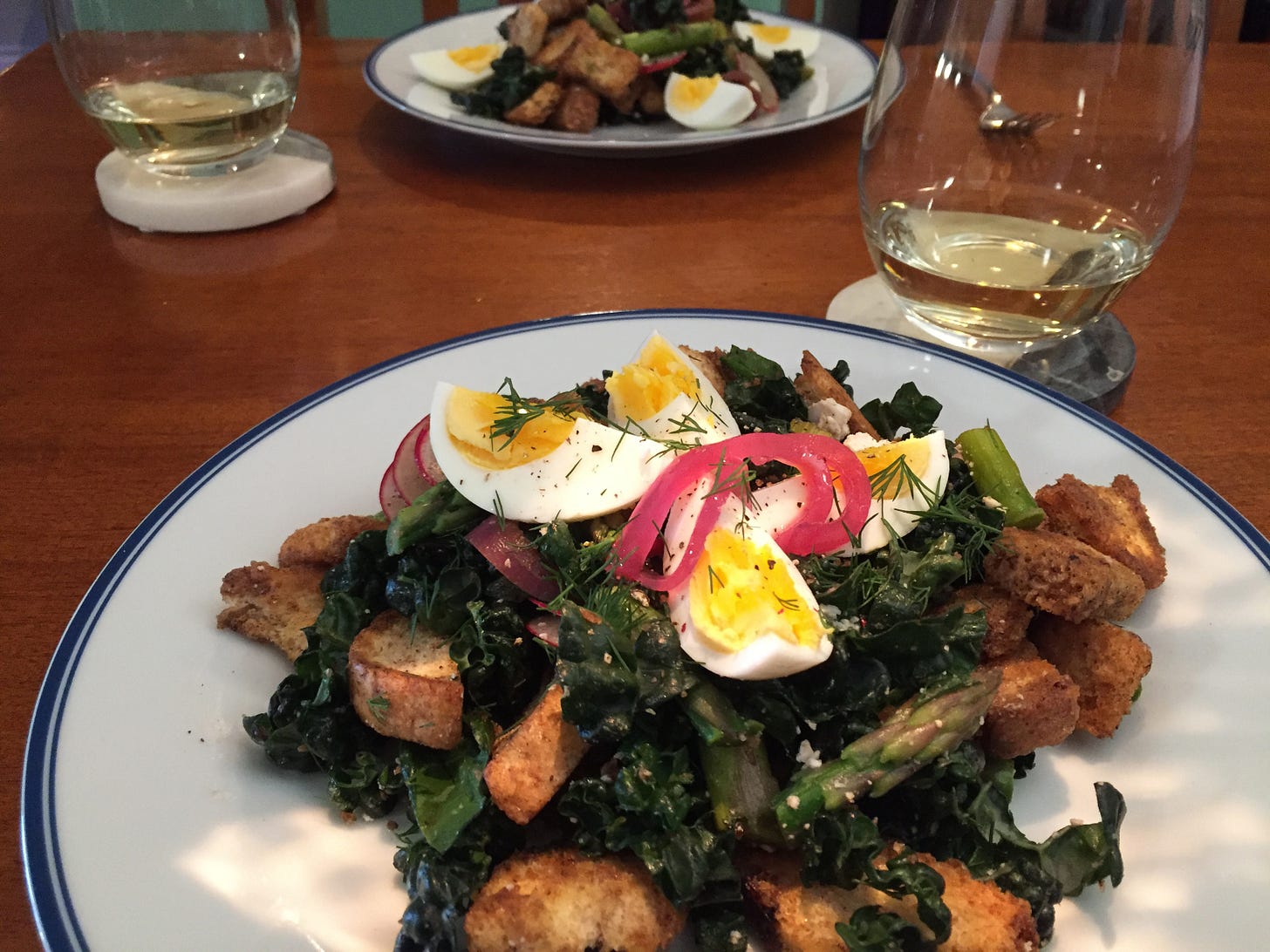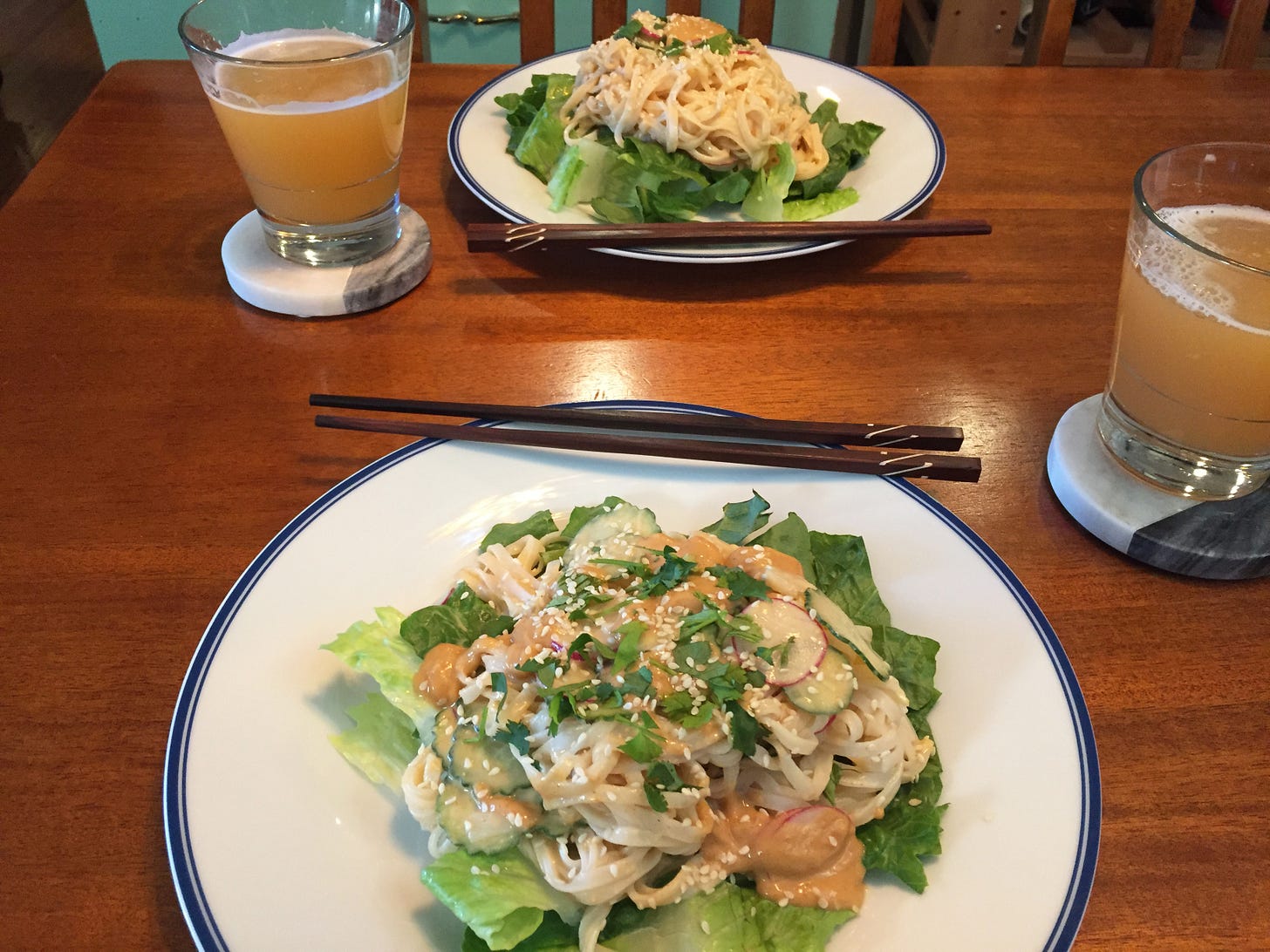It’s been a week of beautiful, warm weather here, and it’s amazing to see the effect it’s had on everyone’s state of mind (despite nothing else improving at all). But sunshine and the allure of spring is powerful, and after weeks of it waiting just offstage, it feels like it’s finally time. We rode bikes to the river on Sunday, which was lovely, but we had to ride up a 20-story hill on the way home and I legitimately felt like I was dying (apparently not doing physical exercise with any regularity since October does not pay).
I also started planting seeds in the garden, just some carrots and radishes and greens to start with while we wait for the nights to warm up a bit for squash and tomatoes. I’ve had to adjust my expectations a little for this year now that we can’t have a second, illegal garden in the empty lot next door— over the fall the city planted fruit tree saplings to turn the area into an ‘urban orchard’, which is cool I guess, but I’ll miss growing secret cucumbers and tomatillos.
With the warmer weather has come a desire to eat things that feel crisp and fresh, which is a fun feeling to compare with my mood in early September, when I desperately wanted salad time to be over so I could make hearty soups and roasted things. While setting up my produce order for the week, I wanted to scream looking at what feels like the only vegetables I have eaten for the past four months: broccoli, kale, potatoes, cabbage. I was desperate for something different so I started browsing all the available produce, and in an out of body experience triggered by ennui, ordered stinging nettles. I’d never cooked with them before (although I have eaten them), probably because the word ‘sting’ rightfully stopped me in my tracks.
Nettles grow wild and are covered in hair-like needles that secrete a venom which irritates the skin, but sautéing them in a hot pan or blanching them in boiling water will neutralize the sting, giving you a dark, edible green similar to spinach (and full of vitamins). This does mean that you have to wear gloves or use tongs to handle them while you cook them, though. This probably wasn’t strictly necessary, but I treated the container they came in like it was hazmat: rinsing the lid in steaming hot water before recycling, and throwing the cardboard bottom directly in the green bin outside.
I cooked them into a frittata from Six Seasons, which is quickly becoming one of my favourite cookbooks. The recipe calls for green garlic or spring onions (I used green onion and regular garlic), asparagus, and nettles, and while I think fresh herbs would be welcome, this was perfectly good seasoned with just salt and pepper. It made for a quick and delicious meal, just lightly sautéing the vegetables in cast iron before adding the eggs, and then throwing it under the broiler to brown the top before sprinkling with crumbled feta. I ate it with some Maldon-salted grape tomatoes and a leftover biscuit from last week for a very satisfying breakfast-for-dinner situation, and the leftovers were still good cold the next morning.
With the other half of the pound of asparagus I ordered, I went for a winter-spring hybrid panzanella. Panzanella, aka “the bread salad”, is possibly the best food to make when you want an actually filling salad for dinner, and also have half a loaf of bread that’s getting a little too old for sandwiches. Last spring I tried the asparagus & mint panzanella recipe in Salt, Fat, Acid, Heat and found it didn’t have enough variation for my liking, with asparagus being the only vegetable component aside from macerated onion. For this one I started with a base of lacinato kale, and the last of the brown butter balsamic vinaigrette I made the other week.
The crouton ratio is important for texture: you want about half of them to marinate in the dressing to soften them a little and fill them with flavour, and the other half to be added at serving time so they remain crunchy. And however long you think you need to blanch the asparagus for, it’s less: unless you’re plunging it into a bowl of ice water immediately, it will continue to cook once it’s removed from the boiling water, and we all know soggy asparagus is one of the top ten saddest vegetables. While the asparagus cooled, I thinly sliced a couple radishes and chopped some fresh dill— mint does go well with asparagus, but it’s only just started to come up in our garden. Crumbled goat feta and pickled red onion added richness and acidity, and I had perfectly cooked eggs to serve on top (boil water, cook for 8 minutes, remove to an ice bath). This was a delightful salad in terms of flavour and texture, and it really satisfied my need to use up some things that needed to be used, as well as eat a meal that felt both fresh and filling.
If you buy buttermilk for a recipe, it means you have now accepted a quest to use 1L of buttermilk before it goes bad. This is a quest in which I almost always fail, but I came close this week, using up most of what was left in a batch of muffins. I don’t know if buttermilk is generally used for muffins, but since many recipes call for yogurt, I figured it’d be ok, and I was craving lemon poppyseed. I googled a few recipes and was going off the majority of the measurements in this one, which makes large café-style muffins (I chose to make slightly smaller muffins and ended up with 15 instead of 12). Since it’s not as thick, I also used slightly less buttermilk than the amount of yogurt in the recipe which may have been a mistake, because they came out a little less fluffy than expected. However this may also be because I wasn’t really paying attention and mixed all the wet ingredients together instead of doing the butter separately at the end, so it did clump together a bit. Muffins are touchy.
The flavour was quite lemony and good, especially after adding the glaze (definitely do this while they’re still warm, so it soaks in), and they were still nice and light despite my baking mishaps. I added a dollop of mascarpone to a few of them which was really tasty— I think next time I would put it in the middle to keep it soft, instead of on top. And I love the crunch of poppyseeds, even if every time I eat them my brain forces me to think about that Seinfeld episode where she fails the drug test because of poppyseed bagels (despite having seen it only once).
Also this week, the return of one of my favourite weeknight meals in spring and summer: Isa’s dragon noodle salad, a salad that is mostly a pile of noodles in spicy peanut sauce with a nominal amount of cucumbers, radishes, and lettuce. And I made lentil ‘meat’ tacos to use up the remainder of the lettuce, and accidentally made them way spicier than usual (which may have made them even better).
Media:
I enjoyed this piece by Emily Atkin, “Against meatposting”. It’s not a call for people to stop eating meat, merely a call to stop glorifying it for its own sake on social media. Reminiscent of the ‘bacon is a vegetable’ insufferable period of the internet, making a post featuring a rare steak to ‘trigger the vegans’ or even simply showcasing a pile of meat for the barbecue reminds us that meat culture has always been a signifier of masculinity and success within our society. And as Atkin succinctly puts it, it’s irresponsible to make posts like these and is akin to bragging about putting gas in your car:
“[Meat] is a thing society uses every day but that is fueling a climate crisis causing massive human suffering, particularly among vulnerable populations.”
The author goes on to note that similarly to fossil fuel companies hiring PR firms to distract people from how much they’re hurting the climate, industrial meat suppliers have meatposters to do some of that work for them, often for free. (The baconization era of the late ‘00s/early ‘10s was actually a forced meme because meat companies had more pork products than they could reasonably expect to sell.) It’s one thing to occasionally eat meat, but it’s another to, be it knowingly or unintentionally, promote the unchecked production and consumption of it, which is actively making the planet worse for all of us.
Also this week the discourse has been around restaurants having trouble finding cooks and servers, sometimes closing as a result, which on the surface seems pitiable, until you think about what line cooks and servers are asked to do for minimum wage or less. Instead of allowing restaurant owners to construct a narrative of workers as lazy and unwilling to work, we should consider that restaurant owners are digging their own graves by refusing to respect workers with better wages and working conditions, and service staff are finally ready to demand better for themselves. No one should have to work an 8+ hour shift in a sweltering kitchen or risk having a customer spit in their face for $11 an hour, let alone during the pandemic when any shift you take could expose you to a potentially deadly virus. If your restaurant’s success depends on the labour of people who are underpaid and overworked, perhaps your restaurant deserves to close.
Thanks for reading— if you enjoyed this newsletter, please share it with someone new! I like providing this to you for free, but it does still involve time and effort, so donations I can use towards cookbooks or future treats are much appreciated. Lastly, here’s a little blast from the past for Canadians (apologies in advance for the earworm).







